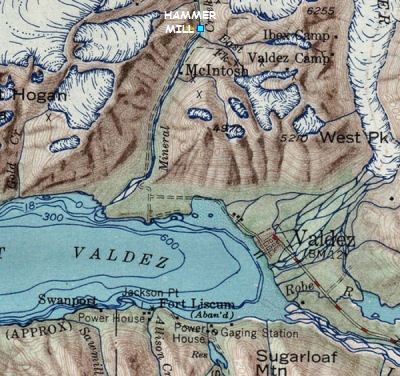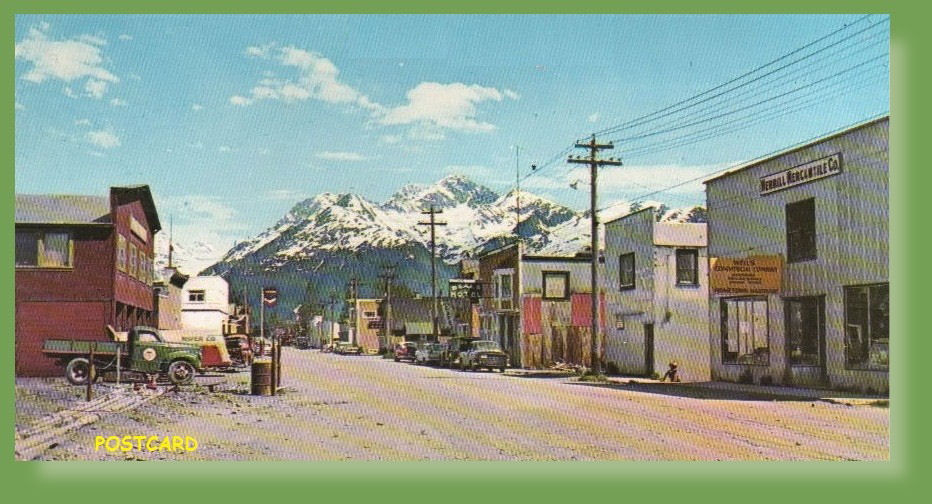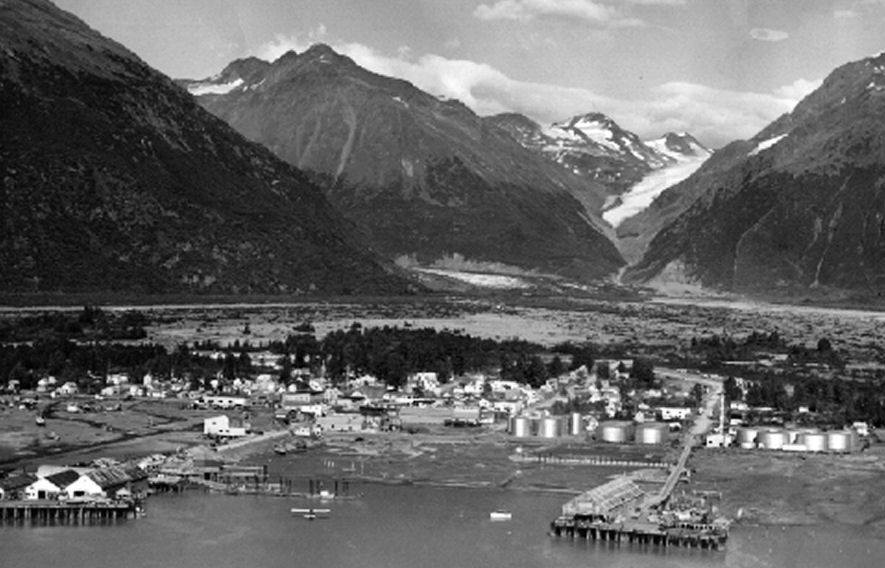|
On March 27, 1964 a 9.2 Earthquake shook VALDEZ. The Great Alaska Earthquake, also known as the Good Friday Earthquake, registered 9.2 on the Richter scale and lasted approximately 4 to 6 minutes. It began at 5:36 p.m. local time. The initial magnitude of the quake was recorded as 8.6, but scientists have since revised it upward based on a new scale used for very large quakes. In early 1964, Valdez was a tiny waterfront town on Prince William Sound. Late in the afternoon of Good Friday, the steamship Chena docked at the town's main pier. The Chena was carrying the first shipment of fresh fruit and goods of the year, and about 30 adults and children greeted the ship, standing on the dock, waving and smiling. As Chena's crew prepared to disembark, some of the sailors tossed fresh oranges from the deck to the children. Just after
5:30
p.m., before the crew climbed off the ship,
the earthquake
began. As trees snapped on shore, and nearby buildings swayed back and
forth, the sea floor beneath the wharf and waterfront collapsed. The
town's
two large piers were sucked into the suddenly raging water, where huge
waves swallowed everything. All of the buildings, vehicles and people
standing
on the waterfront were pulled into the harbor. The people assembled on
the dock to greet the Chena tried to run toward land, but the waves
were
too fast, overtaking all of them.
|
1945 TOPO Map
 |
|
A total of 33 people were killed at Valdez harbor, including three crew members on the Chena, which barely stayed afloat. Witnesses said some of the children were still clutching oranges when they were pulled beneath the surface of the waves. From on board the ship, "I saw people running — it was just ghastly," M.D. Stewart, captain of the Chena, wrote later about the disaster. "They were just engulfed by buildings, water, mud and everything … that is what has kept me awake for days. There was no sign of them." On shore, the
waterfront area was completely destroyed. Beyond
that,
40 percent of Valdez's homes were damaged, all streets were flooded,
and
water and sewer lines broke in 150 locations. Roads were broken into
chunks
that jutted from the ground. A geological study conducted shortly after
the quake determined that the entire area would never again be safe.
The
ground sank permanently in so many places that high tide now covered
residential
streets. Construction began quickly, and within months, the new area was starting to look like a town. A new elementary school was dedicated in the fall of 1964, and the first freighter pulled into the new Valdez harbor in July 1965. In the three years after the quake, Valdez spent $17 million on new roads, schools, government offices, a harbor, a power plant and a hospital. New homes and businesses cost an additional $3 million. Old Valdez was razed, and the site was permanently abandoned. Any Valdez residents born in the last 30 years were forced to rely on faded photographs and the memories of older citizens to know what life was like in the original town — until very recently from: Disaster Relief Stories |
|


